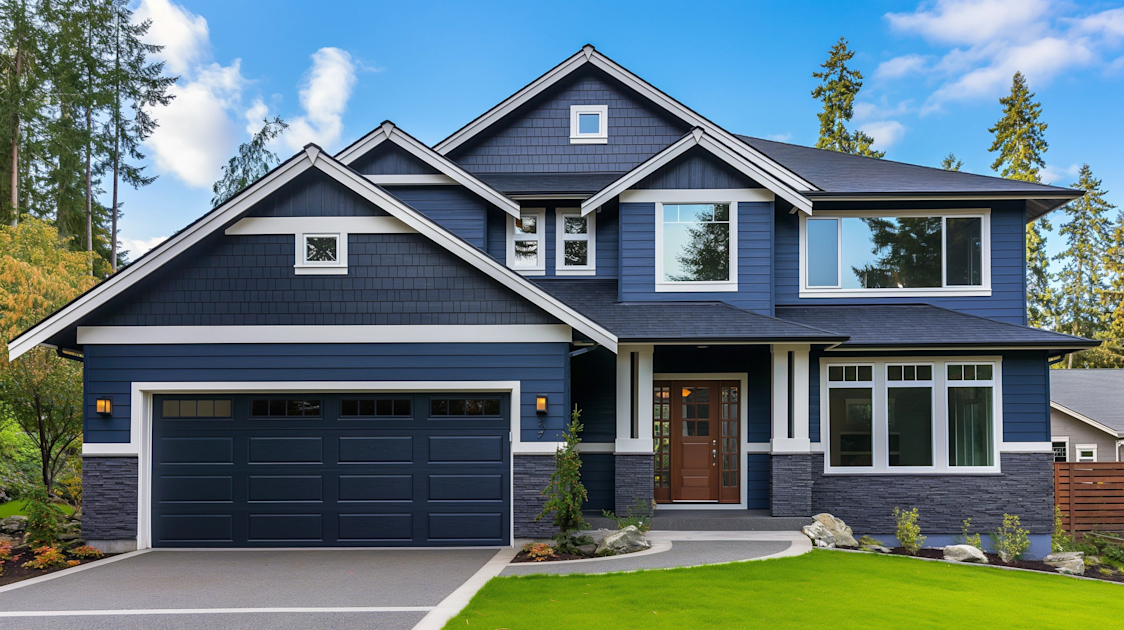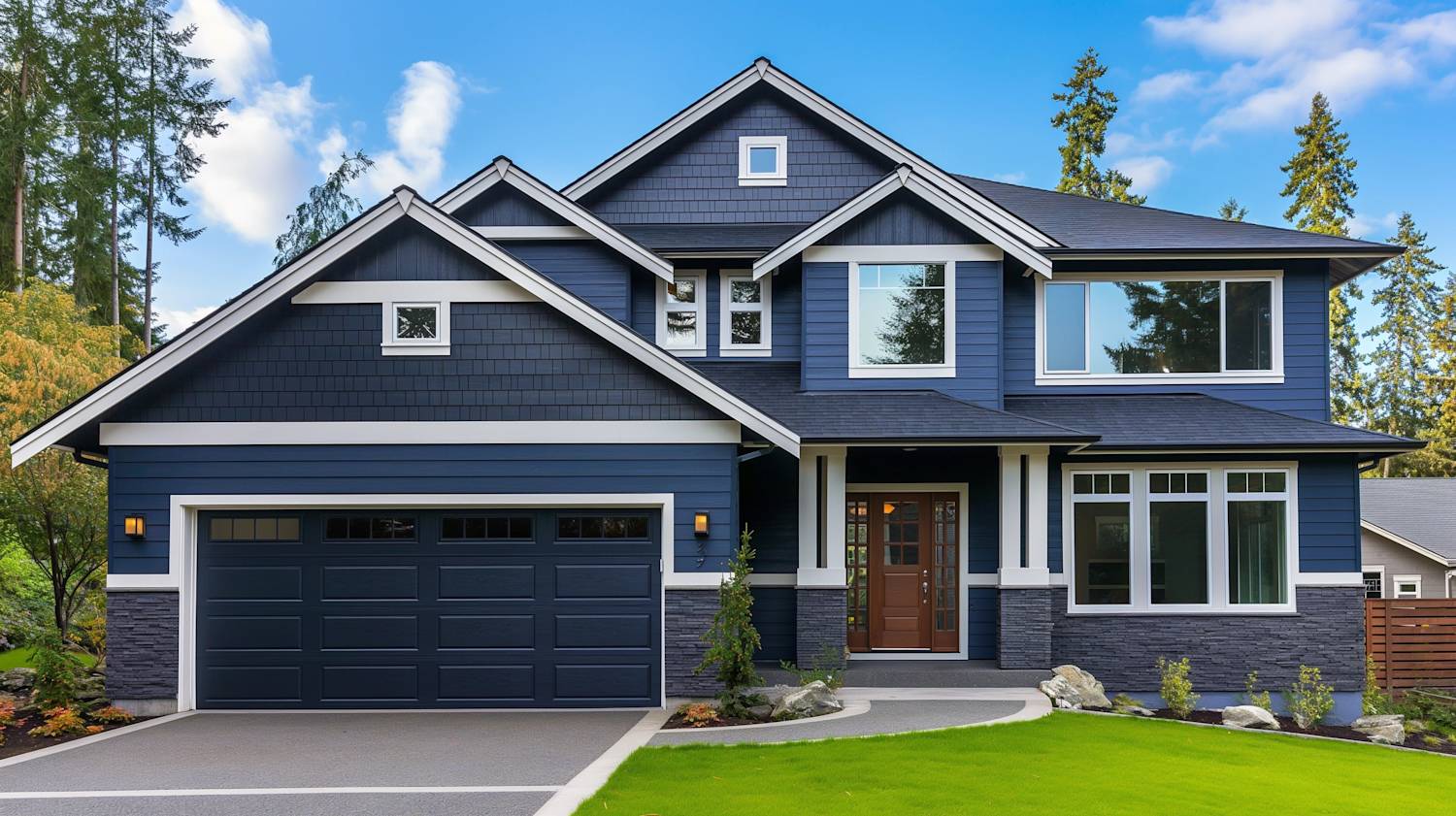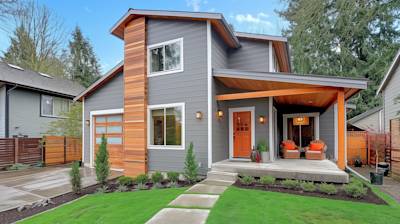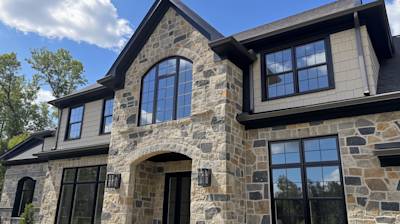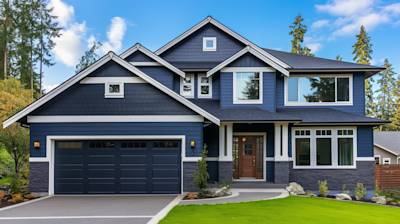If you're a homeowner, you've likely considered various ways to maintain and enhance your property's value, appeal, and longevity. One way is by considering your home's exterior covering, where vinyl siding becomes a vital consideration.
Understanding Vinyl Siding

Vinyl siding is a tough, durable material constructed mainly from PVC (Polyvinyl Chloride) resins. With its fantastic flexibility in styles, sustainable durability, and low upkeep, it has grown to become a popular choice for homeowners. It's the perfect balance between price, appeal, and longevity.
Historical Context of Vinyl Siding
The vinyl siding market took off in the late 1950s when architects began to recognize its potential. Previously, the popular choice was aluminum siding. But vinyl siding stole the show with its vibrant colors, non-fading features, and hassle-free maintenance. Today, it continues to hold a prominent place in the home exterior market.
Styles and Types of Vinyl Siding
Vinyl Clapboard Siding
Clapboard, also known as lap or bevel siding, is characterized by long, horizontal panels that overlap one another, starting from the bottom. This classic style mimics the look of early colonial clapboard structures and is widely cherished for its simple, clean lines. It's an excellent choice for homeowners seeking a traditional aesthetic. Clapboard siding is not only aesthetically pleasing but also effective in shedding water and protecting the home's exterior from the elements.
Vinyl Dutch Lap Siding
Dutch Lap siding features a distinctive design with a decorative groove at the top of each horizontal panel. This groove creates a shadowed effect that adds depth and character to the siding's appearance, enhancing the visual appeal of the home's exterior. Dutch Lap siding is popular among homeowners who desire a slightly more ornate look than the traditional clapboard while maintaining a classic feel.
Vinyl Beveled Seam Siding
Beveled Seam siding offers a unique and modern twist to vinyl siding options. Each panel is cut at an angle to create a slanted, beveled edge, giving the facade a sharp, geometric look. This style is particularly striking when the light hits the surface, creating dynamic shadows and highlights that shift throughout the day. Beveled Seam siding is ideal for homeowners looking to give their home a contemporary edge with distinct visual interest.
Vinyl Board and Batten Siding
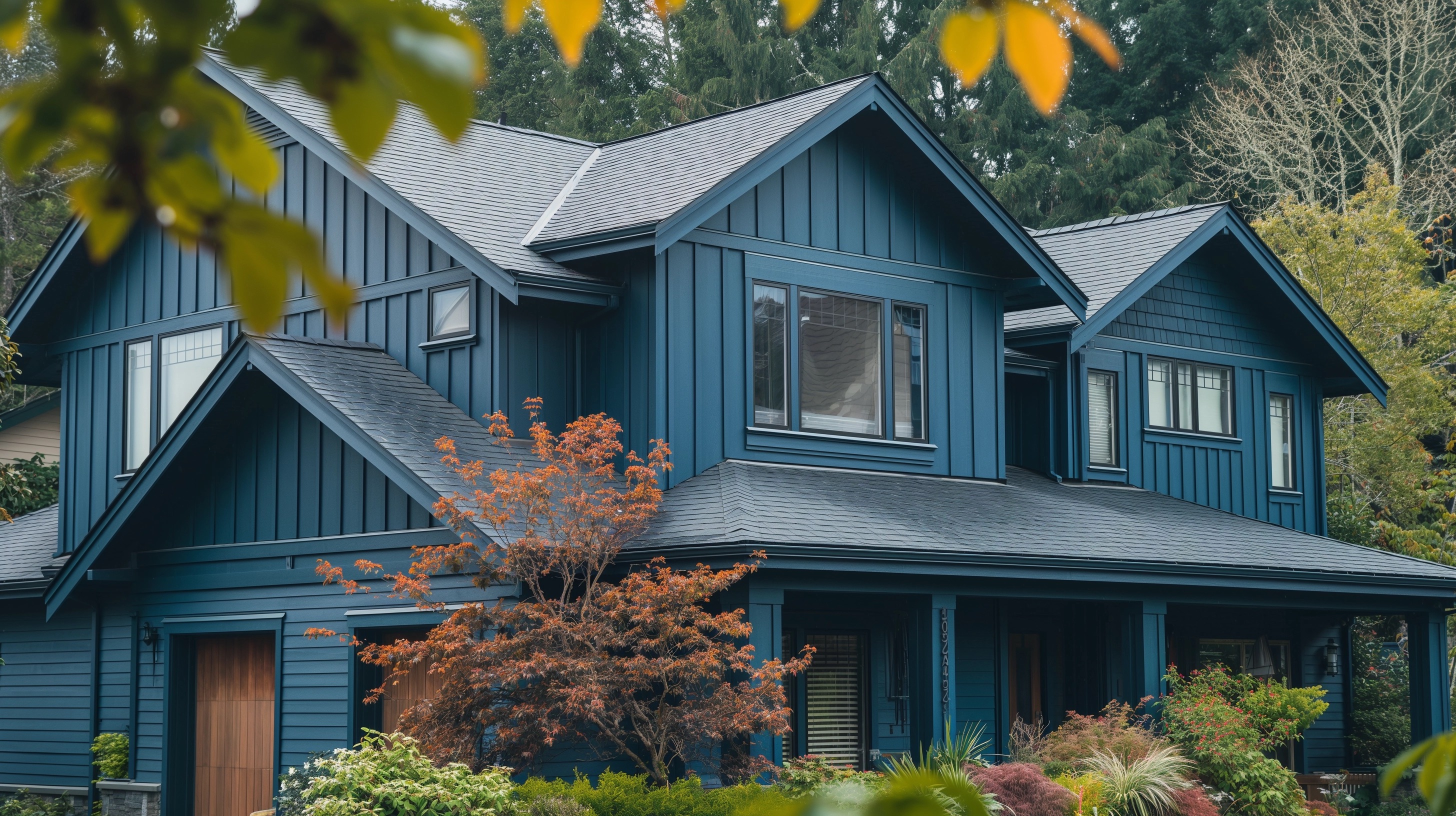
Vinyl Board and Batten siding is a type of vertical siding that features alternating wide boards and narrow strips, or battens, which cover the seams between boards. This style offers a rustic, handcrafted look that is often associated with farmhouse or cottage-style homes. Vinyl Board and Batten is highly durable and low maintenance, making it a practical choice for those looking to add architectural interest and charm to their home's exterior. This style also stands out for its ability to create dramatic texture and depth, making it a popular choice for accent walls or entire facades.
Vinyl Siding Colors and Texture
Vinyl siding is also available in a vast variety of colors and textures. The advancements in color retention technology make these colors last for years without fading. For texture, vinyl siding can be textured to mimic natural wood, allowing homeowners to enjoy the appeal of traditional wood without the maintenance hassles.
The Longevity and Durability of Vinyl Siding
Vinyl siding is celebrated for its fantastic durability and outstanding longevity. Manufactured from resilient PVC resins, it successfully withstands harsh weather conditions, be it sizzling summers or freezing winters. It's also resistant to pests, rot, and corrosion, making it a superior choice for homeowners looking for long-term solutions.
Maintenance Details of Vinyl Siding
When it comes to maintenance, vinyl siding contributes significantly towards cost and time savings. Unlike traditional wood, it doesn't require regular painting, staining, or sealing. A simple wash once a year is usually enough to maintain it in top shape. Moreover, if a piece is damaged, it can be replaced individually without disturbing the rest of the surface.
Is Vinyl Siding Environmentally Friendly?
Among all other siding options, vinyl siding is often hailed as an eco-friendly choice. It requires less energy in manufacturing compared to other materials, which results in fewer emissions. Also, in many cases, old vinyl siding can be recycled, reducing landfill waste.
Installation and Cost of Vinyl Siding
Vinyl siding has straightforward installation methods that even some confident DIY homeowners can undertake. However, for best results, professional installation is recommended. In terms of cost, vinyl siding is generally more affordable than other siding materials. It's not just about the initial costs; maintenance savings over the years make vinyl siding an even more attractive financial choice.
Vinyl siding is indeed a valuable investment for home exterior material. Besides providing robust protection, it brings style, appeal, and versatility. Moreover, its eco-friendly nature and cost-effectiveness make it a hippocket-friendly choice for a long-term and sustainable solution.
Frequently Asked Questions about Vinyl Siding
How long does vinyl siding last?
Vinyl siding is known for its durability and long lifespan. With proper care and maintenance, your vinyl siding can last anywhere between 20 to 40 years. However, the actual longevity of your vinyl siding will depend on factors such as climate, exposure to UV rays, and how well it is maintained.
Is vinyl siding expensive to install?
The cost of installing vinyl siding can vary depending on factors such as the size of your home, the complexity of the job, and the region you live in. However, vinyl siding is often one of the more economical options when compared to other siding materials, making it a popular choice for homeowners looking for a cost-effective siding solution.
How do I clean my vinyl siding?
Keeping your vinyl siding clean can help to extend its lifespan. The process typically involves using a soft cloth or soft-bristle brush to gently clean the siding with a mixture of 30% vinegar and 70% water. For tougher stains, a gentle detergent may be required. Always rinse the siding thoroughly after cleaning to remove any residue.
Can vinyl siding be painted?
Yes, vinyl siding can be painted, but it's not typically recommended. Vinyl siding is designed to be low maintenance and painting it can create a layer that peels or chips over time. If you want a different color, it's usually better to consider replacing the siding with a new color choice.
Is vinyl siding energy-efficient?
Vinyl siding alone doesn't provide a high level of insulation. However, insulated vinyl siding is available, which has an added layer of insulating foam. This type of vinyl siding can improve your home's energy efficiency by reducing heat loss or gain throughout the year.
How resilient is vinyl siding to weather conditions?
Vinyl siding is designed to be weather-resistant and can withstand various weather conditions. However, it's important to note that it may become less resilient in extreme temperatures. For example, in very cold temperatures, vinyl siding can become brittle and crack, while in extremely high temperatures, it may distort or warp.
Can vinyl siding be recycled?
Yes, vinyl siding is recyclable. However, not all recycling facilities accept it, so it's important to check with your local recycling center. If recyclable, your old vinyl siding can be transformed into numerous useful products, reducing its environmental impact.
What type of maintenance does vinyl siding require?
One of the major benefits of vinyl siding is its low maintenance requirement. Other than regular cleaning, vinyl siding doesn't need much upkeep. However, if your vinyl siding gets scratched or damaged, it might need to be replaced as it cannot be patched like other materials.
What factors should I consider when choosing vinyl siding?
When choosing vinyl siding, consider factors such as cost, color, texture, and profile. The siding should complement your home's architectural style. Also, take into account the product's durability, weather resistance, and maintenance requirements. Lastly, make sure the manufacturer provides a good warranty.
Pros of Vinyl Siding
Durability and Low Maintenance
-
Vinyl siding is known for its incredible durability. Being manufactured from plastic, it is resistant to elements that usually damage wood siding such as rot, insects, and moisture.
-
Unlike wooden sidings, vinyl sidings don't attract critters or bugs, offering an additional level of protection to your home.
-
Moreover, vinyl siding requires minimal maintenance. The need for repainting every few years is eliminated, making this siding a cost-effective solution. Occasional cleaning is required to remove dirt and debris and maintain the aesthetic appeal.
Affordability
- Vinyl siding is generally more cost-effective compared to other types of sidings, like wood or brick, not only in terms of initial costs but also in long-term maintenance. This affordability is one of the reasons homeowners choose vinyl siding.
Wide Range of Colors and Styles
-
Vinyl siding comes in a variety of colors and styles. These can range from traditional shades to bolder, more modern options. Therefore, homeowners can choose the one that best suits their taste and the overall aesthetic of their home.
-
The range of styles in vinyl siding mimics different types of wooden sidings, shake, and shingle siding providing homeowners with a multitude of options to choose from.
Cons of Vinyl Siding
Quality Variation
- While vinyl siding is generally durable, the quality can vary depending on the manufacturer. Some low-cost vinyl sidings might not offer the same longevity or resistance to elements as more expensive versions, requiring more frequent repairs or replacements.
Low Energy Efficiency
- Vinyl siding is not as energy-efficient as some other types of siding. In extremely hot or cold weather, it might not provide the insulation you would get from insulated vinyl siding, wooden, or brick sidings. Thus, homeowners may see an increase in their energy bills due to additional heating and cooling requirements.
Environmental Concerns
-
Vinyl is a type of plastic that is not biodegradable and can contribute to pollution when left in a landfill. Although some types of vinyl siding are recyclable, not all municipalities have the necessary facilities to process it.
-
The process of manufacturing vinyl siding also releases toxins into the environment, contributing to global warming.
Potential for Damage
-
Vinyl siding can be vulnerable to high winds, intense heat, heavy hail, or a fallen tree limb causing cracks or breaks. Although individual panels can be replaced, color matching might be difficult and can affect the overall aesthetics of your home.
-
Furthermore, vinyl siding can trap moisture, which if left untreated, can lead to mold or mildew, potentially damaging your home's structure over time.
Summary
If you're thinking about a new look for your home, vinyl siding should be on your list of considerations. It's stylish, durable, and practically maintenance-free. Plus, it never needs painting! Whether you're going for a modern or classic look, vinyl siding can complement your design choices while providing the added benefit of insulation and protection against harsh weather.
Homeowners who want to increase their home's curb appeal while reducing upkeep should definitely consider vinyl siding. Not only does it offer endless style and color options, but it also stands up against the elements without fading or deteriorating over time. Affordable and user-friendly, vinyl siding is definitely a game changer when it comes to home renovations.
When it comes to home improvement investments, vinyl siding is one of the best options out there. It's a perfect blend of visual appeal, durability, and easy maintenance that anyone would appreciate. Whether you're planning to revamp your home for personal enjoyment or increase its market value for the long haul, vinyl siding can help you achieve these goals perfectly.
About Seattle Renovation Group
Welcome to Seattle Renovation Group! We are a premier construction and renovation company based in the heart of Seattle, WA. For years, we've been transforming homes and commercial spaces with unmatched expertise and a passion for excellence. Whether it's a full-scale remodel or a simple upgrade, our talented team works diligently to turn your vision into a reality. Let's start building your dream space together!
Tags: vinyl siding, home improvement, exterior renovation,

